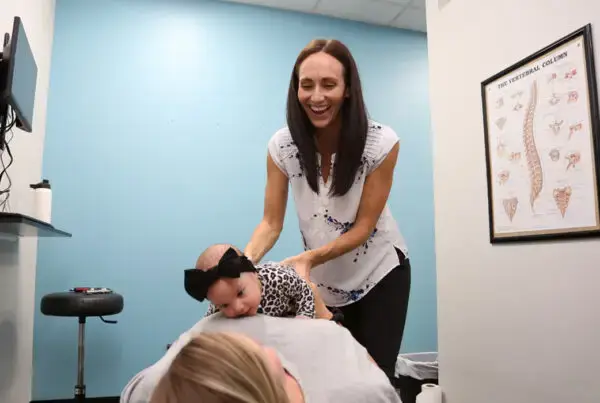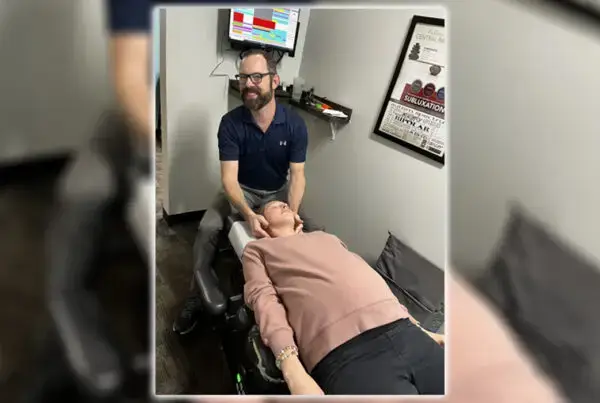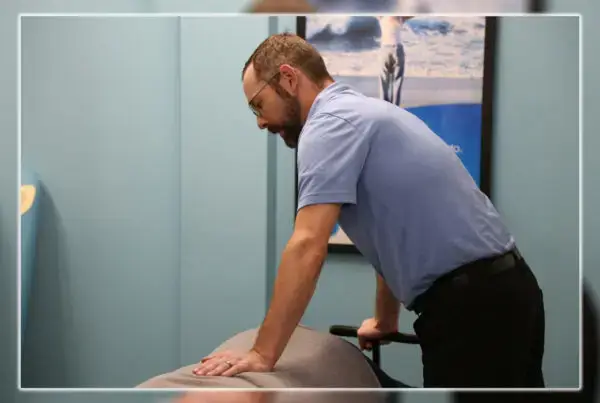
School is now in session! It’s time to talk about how ergonomics in the classroom can affect your child’s education. Smith System provides comfortable yet ergonomic furtniture not only for the office but for classrooms as well. Drs Katie and Quintin Sleigh not only make patients feel better in the office but are motivated to sharing the importance of an ergonmoic work environment. (check out the full article here.)
How Seating Ergonomics Affect Learning
Students sit in thousands of different positions. Upright, slouched, twisted, tilted, straddling their seats. They stretch out their legs, sit on them, cross them, bounce them. They balance on the front of their chair or precariously teeter on the back, tempting gravity – and common sense. They’re kids!
This “free posturing” presents big questions for those who design classroom furniture and those who buy it. Given the highly individualized nature of sitting, how can a single chair design work for an entire classroom? Second, how can that chair improve learning, meet ergonomic standards, and keep kids comfortable? The answer is in obvious and not-so-obvious ways. Before your school invests, here’s some good background information to, well, sit with.
According to some within the ergonomics research community, sitting is complicated. Dr. Tim Springer is founder of the Human Environmental Research Organization (HERO, inc.). He is a recognized expert in measuring worker performance, ergonomics, behavior and the environment. “..”
He says that even when we “sit still,” our bodies are constantly moving. Sitting involves large and small motions. Maintaining balance and slight position changes involve micro motions. Larger macro motions involve moving our arms and legs. Both motions are essential for our well being.
But for students, that’s easier said than done. Consider this information from the University of Manitoba Department of Kinesiology and Recreation Management:
- Time in the Saddle. Kids spend a lot of time (some say too much) sitting. According to the University of Manitoba, elementary children spend around nine hours sitting per day. Another source reports that students sit in classroom chairs for close to 80 percent of their time. Even preschools spend a considerable amount of time in chairs.
- Posture Patterns. Posture patterns begin around age seven. Classroom seating was originally designed to enforce upright posture throughout most of the 20th century. This position can create an excess amount of muscle exertion. Poor posture can also compress the diaphragm, which affects breathing and voice quality.
- Wrong Fit. Children wildly range in size, growth, strength and cognitive ability. Over 83 percent of school children sit at chair-desk combinations that are not suitable for their body height. The researchers also purport that most school furniture is out of date and doesn’t confirm to minimum orthopedic-physiological requirements.
- Physical Stress. The consequences of using classroom furniture that doesn’t meet acceptable ergonomic standards include very real physical symptoms. Typically, conventional chairs have had a rigid seat that inclines backwards and merges into a seating hollow. This design can cause lack of blood circulation; rounding of the back; tense should, neck and back muscles; constricted digestive organs, and spinal cord pressure.
- Educational Drawbacks. It’s well documented that ergonomically poor classroom furniture also impacts cognitive ergonomics, i.e., how our minds work and other mental processes. Examples include lack of attention, poor concentration, poor memory and lowered achievement levels. Obviously, this also impacts teachers, administrators, parents, etc.
SEATING: WHAT ERGONOMICS MATTER MOST?
Ideally, schools would have chairs ergonomically designed and custom-made for every student. Given how unrealistic (read “expensive” and “headache”) that is, here are some ways administrators can get the most ergonomic bang for their buck.
1. Right Size
Classroom seating should support healthy posture from a young age, especially since young bodies are developing rapidly. It should also decrease fidgeting. Ideally, students should be able to sit with their feet firmly planted on the floor and their backs against their chairs.
2. Right Fit/Adjustable
It’s not enough to provide a buffet of chairs, desks and tables and let students randomly choose. It’s essential to ensure that chairs and desks are properly scaled to fit the size of the individual student. A chair should fit the person who sits in it, and a desk should fit to his or her height.
That said, look for a manufacturer who offers adjustable versions of its most popular chairs to meet the needs of small, big and tall kids. Smith System, a K-12 classroom furniture manufacturer, offers seating (and desks) in a wide range of heights – typically four or five per product line. They also offer a range of sizes, with chair shells available in up to three sizes per line. For older students, Smith offers fun café-style seating – stools that adjust from 22-32″ high or fixed height 24″ high and 28″ high, paired with 42-inch-high tables.
3. Seating that Moves
The most notable advancement in classroom seating is seating that moves. Designers and engineers now understand how various degrees of movement, rather than rigidity, of the chair itself can promote learning. Steve Pryor with Smith System, elaborates how educators are “embracing movement.”
“As with most changes, there can be a hesitation to move to new norms that advance more ergonomic, healthier seating. But it is happening,” Pryor says. He describes how Smith System uses a design principle called the Graduated Movement Concept. The company provides chair lines that range from single-position chairs to full four-position seating with side-to-side and front-to-back “give.” Educators can actually tailor the ergonomics of the classroom furniture to support the curriculum. Smith’s seating line includes:
Intuit™ Seating – conceived to contain movement and direct attention straight ahead. It works like a bucket seat, providing back and shoulder support, while orienting the student toward the front.
Plato™ Seating – allows more movement, so students can face front and both sides. This Euro-spec chair provides a wide seat pan, flex, and pronounced lumbar support to encourage good posture and breathing.
Flavors™ Seating – offers maximum movement and four seating positions. Its seat back flexes front to back and torsionally, allowing students to shift and move without chair resistance. This type of seating provides the benefits of a stability ball, but with more overall stability and back support, and less student misuse.
4. Function
While ergonomics is essential, classroom seating must fit functionality. In other words, it has to complement the curriculum. Because 21st Century learning often takes place in groups numbering from two to six students, classroom furniture must be nimble enough to be configurable into groups.
Pryor says educators and designers have a keen understanding that classrooms have become active learning environments. This requires portable (in weight and design) chairs that students of all ages can quickly and easily move, arrange, stack and store.”
Today, the smartest chairs are ergonomically designed to adjust in size, provide the right fit, move with a student, and enhance curriculum. They truly redefine the meaning of “bottoms up”.”
If you are unsure about your work/school space be sure to ask Drs Katie and Quintin Sleigh what they think on your next appointment!




